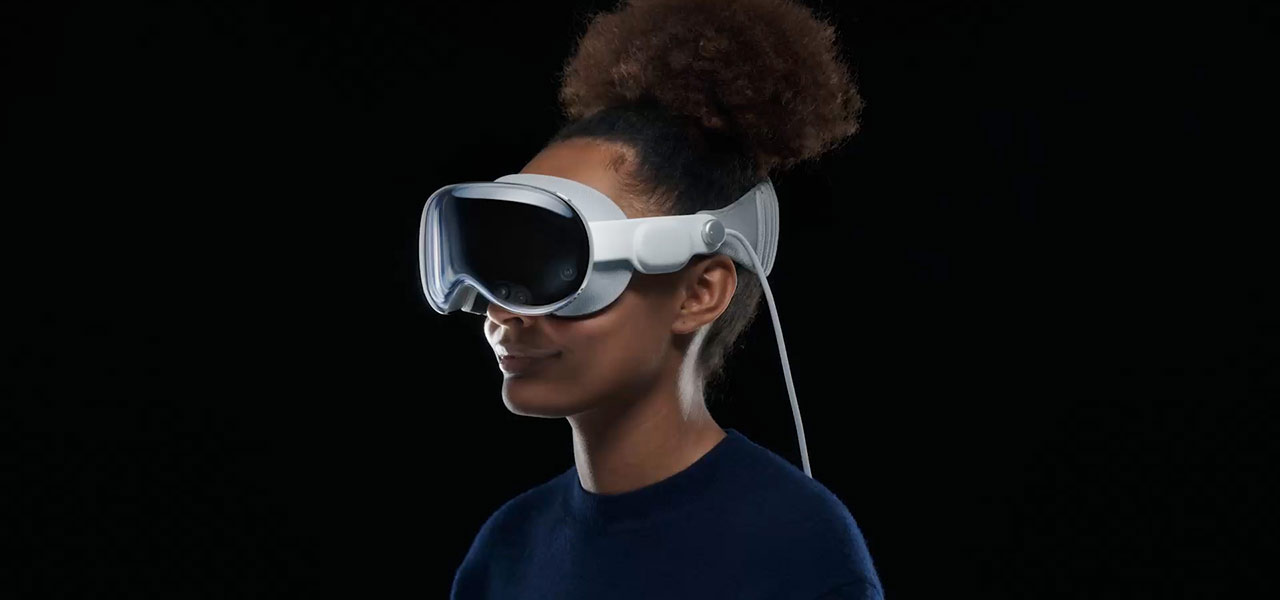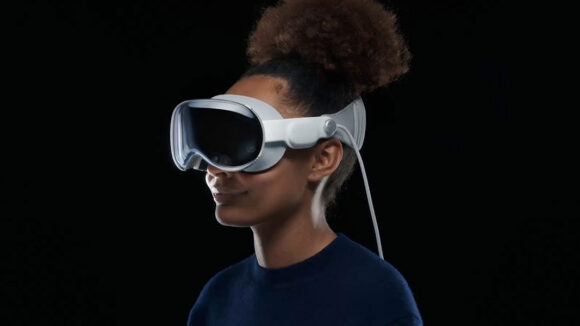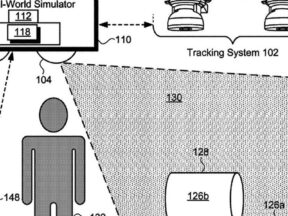

Animation Will Be Key To Vision Pro’s Success – And Other Observations On Apple’s Spatial Computing Device
Apple has unveiled its new vr/ar Vision Pro Headset which will hit the U.S. market in early 2024.
Held at the company’s Worldwide Developers Conference (WWDC), Apple’s two-hour-long unveiling presentation was headlined by CEO Tim Cook, who made the bold claim that, “Today marks the beginning of a new era for computing.” He went so far as to compare the Vision Pro to the first Mac computers or the original iPhone, two of the most omnipresent and influential technological devices of the past half-century.
The Vision Pro comes with a hefty price tag of $3,499, far more than most of its competitors. Meta’s Quest Pro, for example, will run $999 (down from $1,500 when it was first announced) when it launches on October 25. Virtual reality and augmented reality have been around for a long time now but have failed to gain mainstream traction. The upcoming launches of the Quest Pro and Vision Pro could go a long way toward determining whether vr and ar ever become part of people’s daily lives, or if they’ll exist mostly as high-priced toys for tech-savvy consumers.
Below, we look at five takeaways from Apple’s WWDC presentation.
1) Animation and VR/AR
We’ve said it before and we’ll keep saying it, the future of vr and ar will depend heavily on the artists and technicians creating the virtual spaces experienced by the users. The aesthetic of a vr or ar space will be as important to potential consumers as how the technology works and what it costs. For any new virtual or augmented technology to find mainstream success, users will have to want to spend time looking at the characters, worlds, and user interfaces inside their headsets.
Conversely, if Apple’s new device does manage to mainstream vr/ar, it would have a massive impact on the world of animation. There would be a plethora of new opportunities for artists and technicians in entertainment, gaming, and interactivity.
Interestingly, cg animation also appears to be a key part of how Apple is marketing the Vision Pro. In a tweet, 3d artist Ian Spriggs shared a clip that used a photorealistic human model that he had created for the promo. That clip appeared in Cook’s WWDC presentation and is at the very top of the company’s Vision Pro press release. We can’t say with certainty, but several other scenes in the promotional videos shared yesterday also appear to use cg animation.
I had the opportunity to work with @Apple to create this digital human for the release of it's Vision Pro. It transitions to cg after the arm swipes across the face. Their team did amazing pulling it all together. Pretty cool. #visionpro #digitalhuman pic.twitter.com/JKWdiAFK3h
— Ian Spriggs (@SpriggsIan) June 5, 2023
2) Disney is an early adopter of Apple’s platform
The Walt Disney Company CEO Bob Iger (who is actively involved with the vr/ar/metaverse scene) made a four-minute cameo during Apple’s WWDC presentation, announcing that Disney+ will be one of the apps available on Apple Vision Pro from day one.
“We’re constantly in search of new ways to entertain, inform, and inspire our fans by combining extraordinary creativity with groundbreaking technology to create truly remarkable experiences,” said Iger, adding, “We believe Apple Vision Pro is a revolutionary platform that can make our vision a reality.”
The executive shared a promotional video that showed some extremely impressive augmented reality clips, although it was light on specifics about how much of that material will be available in the Disney+ Vision Pro app, and how much was conceptual.
3) Practical vs. Entertainment
The Vision Pro unveil had a lot in common with Meta’s recent marketing of its Quest Pro headset. Both companies emphasized their hardware’s practical applications as much or more than their entertainment offerings. It’s clear that companies understand that vr and ar headsets won’t work if they’re just high-priced toys, so they’re marketing them as tools for work. Heck, they both put the word “Pro” in the devices’ names.
As Meta did with its Quest Pro, Apple allowed software developers early access to its hardware to design apps that will be ready to use on day one. In both cases, Microsoft was a key partner and has developed apps for Office programs including Word and Excel. Promotional materials for both the Quest Pro and Vision Pro focused heavily on using their hardware for remote working.
4) Technical Specs
One major advantage that the Vision Pro offers over current headsets is that it uses eye and hand movements as well as voice commands for navigation, not external controllers. Another feature that sets this headset apart is that when the user is in the augmented reality setting, the goggles become translucent so multiple users in the same physical space can still interact and make eye contact. Then, when a user activates the full vr mode, the lenses turn opaque.
Image quality in the Vision Pro should be top-notch as well. The screen for each eye of the Vision Pro is comprised of 23 million pixels. That means that 64 Vision Pro pixels could fit in the same space as one iPhone pixel, creating an incredibly sharp and realistic picture. For more about the pixel density, here’s an explanation of the micro-OLED technology being used on the Vision Pro.
The Vision Pro comes with Apple’s first 3d camera, which captures spatial videos and photos. Using the system’s ar setting, it can modify a user’s surroundings to appear like a personal movie theater with a screen that appears to be 100 feet wide. According to a release, on launch, the huge virtual screen will be usable to stream Apple TV+, 100 Apple Arcade games, other Apple services, and – according to Iger – Disney+.
5) Will it Sell?
Apple has a lot riding on the success of the Vision Pro. Reports have indicated that Apple has had the Vision Pro in development for seven years. It will be the company’s first new product category launch since the Apple Watch in 2015. According to a Bloomberg report, Apple expects to sell 900,000 headsets in 2024. But is that too optimistic?
As exciting as vr and ar promo videos often look, the fact of the matter is that the technology has not earned mainstream acceptance. It’s often unfamiliar to most people and in many cases – particularly this one – the entry cost is prohibitively high. Apple finding nearly a million people willing to part with $3,499 for a headset would be a major achievement and could, as Cook said, mark “the beginning of a new era for computing.”
Pictured at top: A screengrab from an Apple Vision Pro promotional video.

.png)

